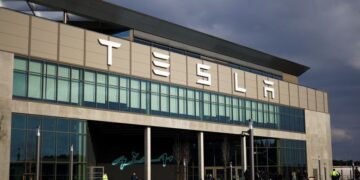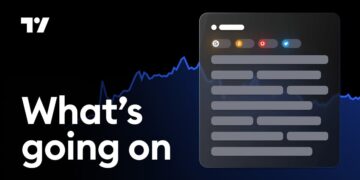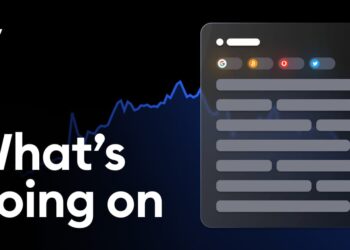Arbitrum is a Layer-2 (L2) scaling solution for Ethereum, the world’s top smart contract blockchain. Launched in 2021 by Offchain Labs, it’s like a turbo boost for Ethereum, making transactions quicker and way less expensive while keeping everything secure. Instead of clogging Ethereum’s main chain, Arbitrum handles most of the heavy lifting off-chain and reports back, saving time and money.
The ARB token powers Arbitrum’s ecosystem, used for governance in the Arbitrum DAO, where holders vote on upgrades and fund allocations. As of June 2025, Arbitrum boasts $13.66 billion in total value locked (TVL), 31.8% of the L2 market share, and 1.89 billion transactions (per Arbitrum).
What Does Arbitrum Do?
Arbitrum solves Ethereum’s biggest headaches of high fees and slow transactions, while keeping its security. Here’s what it does:
-
Speeds Up Transactions: Ethereum handles 15–30 transactions per second (tx/s). Arbitrum can process thousands, making DeFi apps like swaps or lending instant.
-
Cuts Costs: Ethereum gas fees can hit $10–$50 during busy times. Arbitrum transactions cost ~$0.02, perfect for small trades or NFT mints.
-
Keeps Security Tight: Using optimistic rollups, Arbitrum processes transactions off-chain but settles them on Ethereum, ensuring no one can cheat.
-
Powers DeFi and More: It hosts 250+ apps, including Uniswap V3 (swapping), Aave (lending), and GMX (trading), plus gaming and NFT projects on Arbitrum Nova.
Arbitrum’s tech makes Ethereum usable for everyday folks, not just crypto whales, driving adoption in 2025’s $3.3 trillion crypto market.
Arbitrum’s 2025 Milestones
Here’s a look at Arbitrum’s key developments in 2025:
-
January 2025: Arbitrum settles a 2022 CFTC lawsuit for $5 million over misleading 2017 Bitcoin auction statements, later filing a complaint alleging CFTC “lawfare.”
-
March 10, 2025: A $140,000 hack exploits a signature verification flaw, raising security concerns. Arbitrum patches the issue, per CertiK.
-
March 2025: Offchain Labs announces ARB token buybacks to stabilize prices after an 85% drop from its all-time high.
-
April 2025: Arbitrum DAO allocates 35 million ARB ($11.6 million) to tokenize U.S. Treasurys with Franklin Templeton and WisdomTree, boosting RWA adoption.
-
June 6, 2025: Arbitrum files for a U.S. IPO, signaling confidence in a crypto-friendly regulatory shift.
-
June 13, 2025: Arbitrum integrates the Pectra upgrade, enabling one-click swaps and gas sponsorships for better user experience.
-
June 16, 2025: Arbitrum nears a Malta license under EU’s MiCA framework, eyeing pan-European expansion.
ARB Token
As of June 23, 2025, ARB trades at roughly $0.2746, with a market cap of $1.36 billion and a 24-hour trading volume of $206 million. It’s down by 17% over last one week, reflecting volatility. ARB’s all-time high was $2.6 (January 2024), and it’s now 84% below that peak.
Despite setbacks, sentiment on ARB is cautiously optimistic, with people bullish due to the IPO filing and RWA initiatives, though others cite security concerns. Offchain Labs’ buybacks aim to reduce volatility, but analysts predict ARB could hit $0.43 by 2026 if adoption grows.
Recent Updates (Pectra, RWAs, and Security Challenges)
Pectra Upgrade (June 2025)
Arbitrum’s integration of Ethereum’s Pectra upgrade enhances user experience with one-click token swaps and gas sponsorships, reducing barriers for DeFi users.
Real-World Assets (RWAs)
The Arbitrum DAO’s $11.6 million investment in tokenized U.S. Treasurys via Franklin Templeton and WisdomTree marks a push into RWAs, with TVL for RWAs hitting an all-time high. This attracts institutional investors.
Security Breaches
A March 2025 hack costing $140,000 exposed a signature verification flaw, patched swiftly but sparking concerns about network reliability. A separate $840,000 hack on Arbitrum-based Orange Finance highlighted DeFi risks. Arbitrum’s response aimed to bolster security by enhancing audits and adding zkVerify integration.
Arbitrum’s Ecosystem: DeFi and Beyond
Arbitrum hosts over 250 DeFi projects, including:
-
GMX: A leading decentralized exchange for leverage trading.
-
Uniswap V3: A top automated market maker with low-fee swaps.
-
Aave: A lending protocol with billions in TVL.
Its Arbitrum One and Nova chains cater to different needs: One for general DeFi, Nova for high-volume apps like gaming. The upcoming Orbit layer-three solution and Stylus (for Rust/C++ smart contracts) promise further growth.
Should You Invest in Arbitrum Crypto?
Arbitrum’s strengths are its low fees, high throughput, and Ethereum compatibility which make it a DeFi powerhouse. The IPO filing and RWA push signal growth, but the 85% price drop and hacks raise risks. For investors, ARB’s $0.40 price could be a buy opportunity if adoption continues, but volatility requires caution. Developers benefit from Arbitrum’s robust tools and upcoming Stylus feature.
Arbitrum crypto is a cornerstone of Ethereum’s scalability, offering lightning-fast, low-cost transactions in 2025. Despite challenges like hacks and price dips, its Pectra upgrade, RWA initiatives, and IPO filing show ambition. For DeFi enthusiasts and cautious investors, Arbitrum remains a top L2 choice.




















